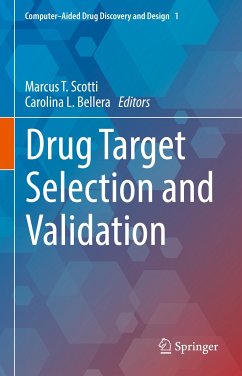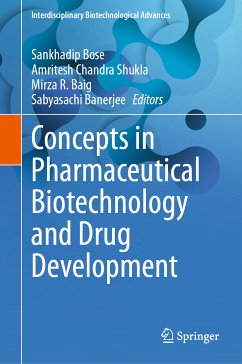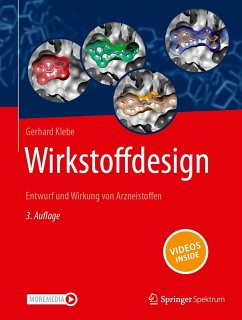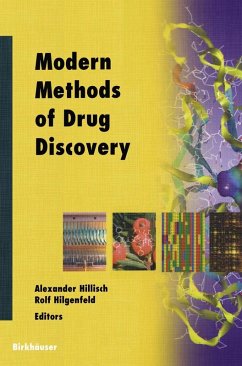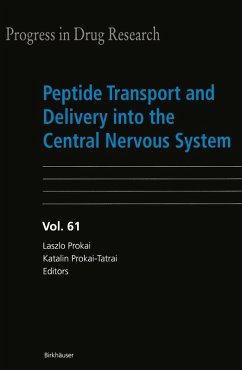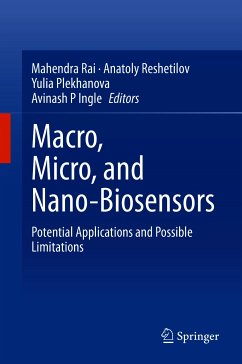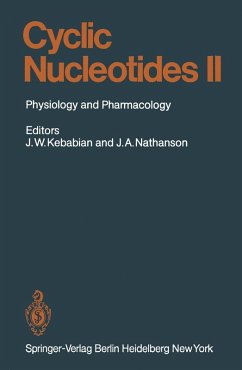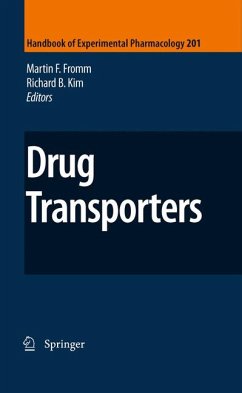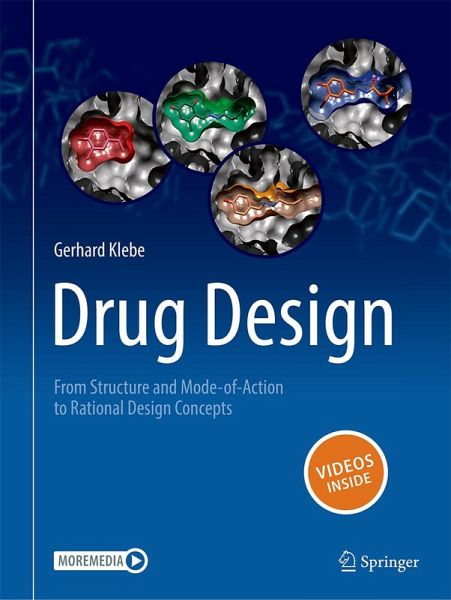
Drug Design (eBook, PDF)
From Structure and Mode-of-Action to Rational Design Concepts
Versandkostenfrei!
Sofort per Download lieferbar
60,95 €
inkl. MwSt.
Weitere Ausgaben:

PAYBACK Punkte
30 °P sammeln!
This English-language textbook, based on the successful German edition 'Wirkstoffdesign', brings the subject of drug design back to the cutting edge of research. The reader learns about new methods in genetic engineering and the expanded range of structural biological methods. Especially in the last 10 years, many complex target structures such as G-protein coupled receptors or ion channels have been elucidated by using these methods. The reader learns how these long-sought complex structures with classical drugs look like and how the therapeutic effect is achieved.This textbook is aimed at st...
This English-language textbook, based on the successful German edition 'Wirkstoffdesign', brings the subject of drug design back to the cutting edge of research. The reader learns about new methods in genetic engineering and the expanded range of structural biological methods. Especially in the last 10 years, many complex target structures such as G-protein coupled receptors or ion channels have been elucidated by using these methods. The reader learns how these long-sought complex structures with classical drugs look like and how the therapeutic effect is achieved.
This textbook is aimed at students of pharmacy, chemistry and the life sciences, but also at career changers and medicinal chemists in research and development departments of the pharmaceutical industry. Conceptually, it is very different from classical textbooks on pharmaceutical chemistry. It focuses on the path to a new drug substance. The selection of case studies is based on didactic aspects and attempts to give a broad overview of methods and strategies without forgetting to look back at the beginnings of this field of work. Thus, the arc spans from the history of drug research, the mechanisms of action of drugs and the methods for lead structure search and optimisation to structure determination methods, modelling, molecular dynamics and QSAR methods to structure- and computer-aided design.
This textbook also discusses new methods and concepts such as epigenetics, the PROTAC approach, CRISPR-Cas9 gene scissors, structural predictions from sequence, the use of artificial intelligence and new screening technologies from biophysics. It presents successes in disrupting or enhancing protein-protein interactions as a concept for drug therapy and discusses optimising drugs considering their thermodynamic as well as kinetic binding profiles .
Videos via app: simply download the SN More Media app free of charge, scan a link with the play button and immediately play the video on your smartphone or tablet.
This textbook is aimed at students of pharmacy, chemistry and the life sciences, but also at career changers and medicinal chemists in research and development departments of the pharmaceutical industry. Conceptually, it is very different from classical textbooks on pharmaceutical chemistry. It focuses on the path to a new drug substance. The selection of case studies is based on didactic aspects and attempts to give a broad overview of methods and strategies without forgetting to look back at the beginnings of this field of work. Thus, the arc spans from the history of drug research, the mechanisms of action of drugs and the methods for lead structure search and optimisation to structure determination methods, modelling, molecular dynamics and QSAR methods to structure- and computer-aided design.
This textbook also discusses new methods and concepts such as epigenetics, the PROTAC approach, CRISPR-Cas9 gene scissors, structural predictions from sequence, the use of artificial intelligence and new screening technologies from biophysics. It presents successes in disrupting or enhancing protein-protein interactions as a concept for drug therapy and discusses optimising drugs considering their thermodynamic as well as kinetic binding profiles .
Videos via app: simply download the SN More Media app free of charge, scan a link with the play button and immediately play the video on your smartphone or tablet.
Dieser Download kann aus rechtlichen Gründen nur mit Rechnungsadresse in A, B, BG, CY, CZ, D, DK, EW, E, FIN, F, GR, HR, H, IRL, I, LT, L, LR, M, NL, PL, P, R, S, SLO, SK ausgeliefert werden.



